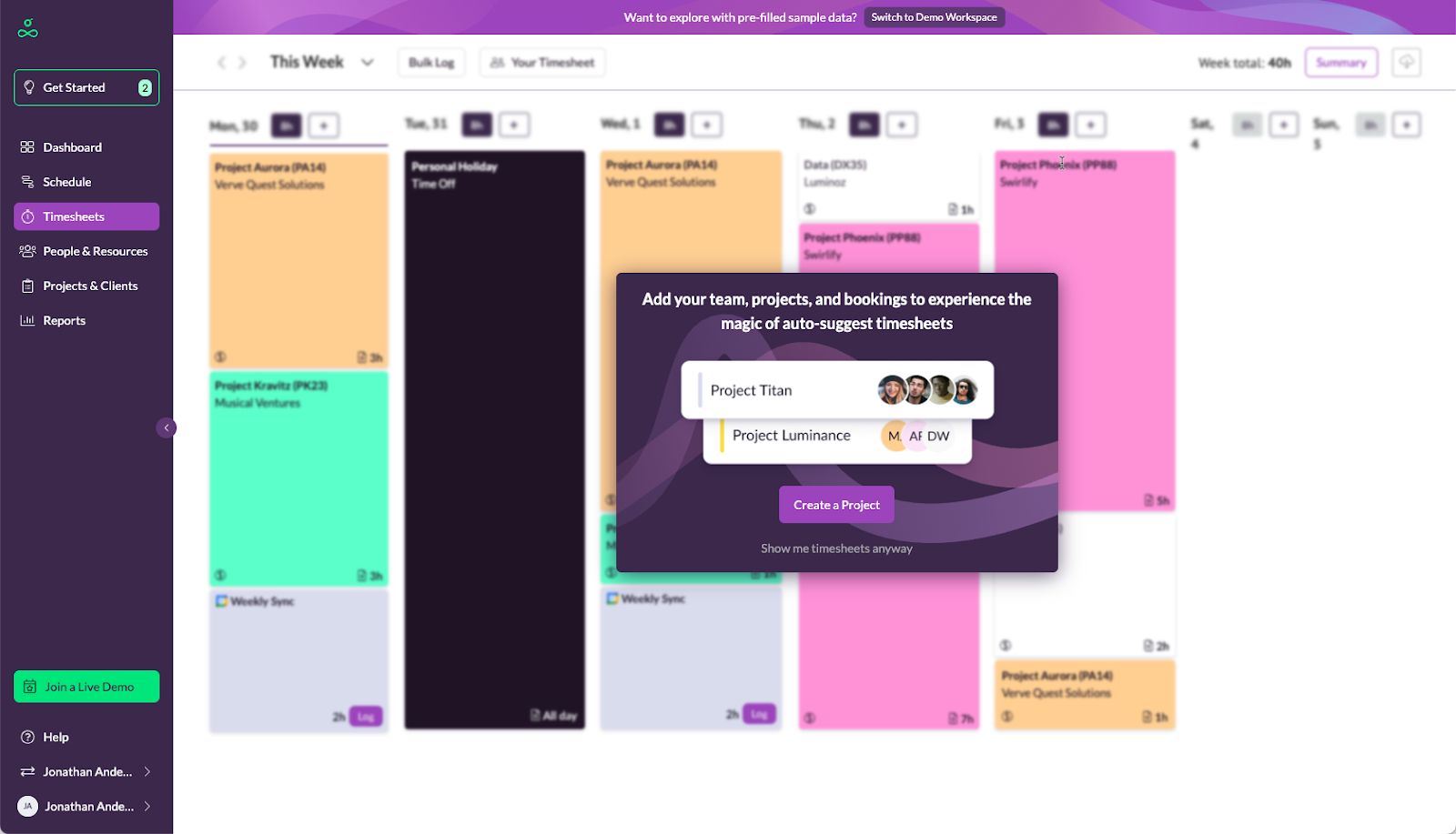Resource Guru’s onboarding works because it follows a tight loop. Clarify the product promise. Ask a few high-signal questions to personalize. Prompt the handful of actions that predict success. Then iterate weekly against one leading indicator.
New trialists see what Resource Guru helps them achieve, not every feature. The early surfaces are calm and specific. Scheduling. Avoiding clashes. Forecasting capacity. Guidance appears right where the task happens, not in a long tour.
Why it works: People decide to lean in during the first minute. A clear promise and contextual help keep ability high and confusion low.
“We wanted to provide a clean, conversational onboarding that matched our brand voice and re-enforced the value Resource Guru provides” — Mike Jongbloet, Lead Product Designer at Resource Guru
Resource Guru collects some key information that alters the experience. The onboarding subtly adapts based on each user’s responses and their in-product actions, guiding them toward the most relevant next step.
“The layers of customization have led to valuable insights and far more tailored conversations with potential customers.” — Mike
.png)
Why it works: One or two high-signal questions collapse irrelevant paths. Additional questions are most useful to help you learn more about your users.
If you’re choosing the onboarding questions, start here.
Resource Guru uses a practical leading indicator to avoid waiting 30-45 days for conversion data. If a trialist is active on two separate days, their likelihood to subscribe jumps meaningfully.
“Finding a reliable leading metric has been huge for our ability to experiment and learn rapidly," said Mike.
Because day-2 activity is the early signal, Resource Guru repeats the three actions everywhere they count: getting started checklist, empty states, and a short booking helper and removes everything else from the first mile.
With that signal in hand, the UI consistently calls people to:
These show up in a small checklist, optional micro-tours, and empty states that pitch the benefit and offer a single primary action.
“Once those initial actions are taken we're encouraging people to pick what matters most to them and using contextual help in those areas, rather than a big "catch-all" tutorial.”
.png)
Resource Guru Getting Started checklist with three checklist items and visible progress.
Why it works: Clear prompts plus nearby actions carry people over the line. Where a step is harder, a small facilitator reduces effort. For booking, a quick modal shows a short GIF of “click and drag to create a booking,” then drops you onto the schedule.
Resource Guru keeps learning after week one. A thin research banner recruits for betas on big features like Reports. A lightweight feedback lane stays open. Empty states continue to teach and sell. Resource Guru even anchors help to a familiar UI element so people always know where to click.
They also use sensible guardrails. Until you add people, projects, and bookings, some areas are replaced with empty states that point you back to the next step.
“Timesheets and reports aren’t very interesting until you’ve added people, projects, and booking data so we replace those screens and guide people to complete their next step,” said Mike.

Resource Guru shines best with a good amount of data in the system but this requires time commitment from trial customers. To remove this barrier they give trialists a demo workspace to poke around in first. It’s the same UI and data structure, just full of data and consequence-free.

A safe sandbox removes the I don’t want to spend time entering data objection, which nudges more users to come back on Day 2 and try the real thing.
Measure with focus. Instrument outcomes, not everything. Pick the few events that prove your leading indicator and core actions, then compare “saw prompt → clicked → completed → hit the leading indicator.” Make a call in a week, not a quarter.
Keep cadence. Keep the loop tight. Try a change, read the signal, ship again.
“The onboarding flow changes every week or two or three at the moment,” said Mike.
Even at the end of trial, the tone stays respectful. Instead of a hard wall, Resource Guru presents a calm upgrade moment with clear plans and answers.
.png)
Turning locked-out into a well-designed decision moment reduces frustration and keeps momentum toward the right plan.
Here’s how teams use Candu to iterate on their onboarding in a week.
